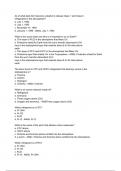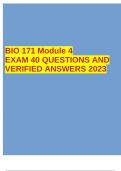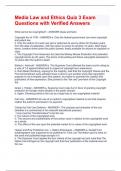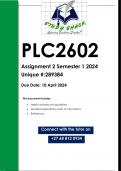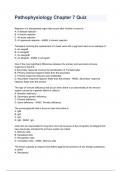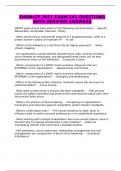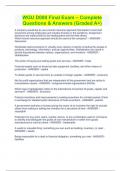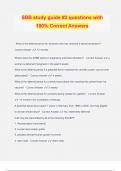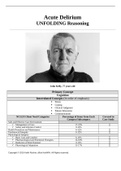Exam (elaborations)
NUR 120 MIDTERM STUDY GUIDE Questions with Correct Answers
- Course
- Institution
1. What is meant by indications for a drug? What is the difference between therapeutic class and pharmacologic class? Correct Answer Indications- the conditions for which a drug is approved Therapeutic class- what is being TREATED Pharmacological class-how the drug acts 2. Know the phases of c...
[Show more]




